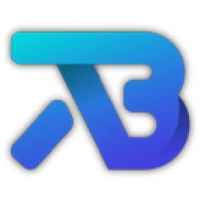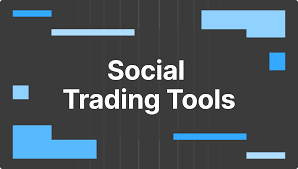In the dynamic world of currency exchange, access and tools define success. Forex trading, once the domain of large financial institutions, is now readily available to retail traders through online platforms. At the heart of this accessibility are forex trade brokers —intermediaries that connect traders to the global currency market. The quality of market access and the range of trading tools offered can significantly impact a trader’s experience and performance.
Understanding Market Access in Forex Trading
Market access refers to a trader’s ability to participate in the forex market through a broker’s infrastructure. A broker acts as a bridge, offering pricing, liquidity, and execution of trades. The strength of this bridge depends on several elements: connection to liquidity providers, execution speed, and the depth of available markets.
Liquidity is a key factor. The forex market is vast and liquid, but not all brokers provide the same access. Some brokers offer a wider selection of currency pairs, including majors, minors, and exotics, enabling traders to diversify their strategies. Others focus on a narrower range, which may limit opportunities.
Execution quality is equally vital. In volatile markets, even small delays can lead to slippage, where trades are executed at a different price than expected. Brokers with robust technology infrastructure ensure fast, reliable execution with minimal price deviation.
Another critical aspect is access to different market types. Some brokers offer direct market access (DMA), allowing traders to interact with liquidity providers directly. Others operate on a dealing desk model. The choice depends on a trader’s strategy and preferences, but both models aim to provide efficient order fulfillment.
Trading Platforms as the Gateway
Trading platforms are the primary interface between a trader and the forex market. A broker’s choice of platforms can define how easily and effectively a trader can operate. The most popular platforms offer intuitive interfaces, real-time charting, and advanced order types.
A good trading platform must support various execution modes, including market, limit, and stop orders. Charting tools should be customizable, offering multiple timeframes and a range of indicators. Platforms that allow traders to overlay technical analysis directly on the chart streamline decision-making.
Mobile compatibility is another growing requirement. Many brokers now offer mobile applications with nearly the same functionality as desktop platforms. This flexibility enables traders to monitor and execute trades on the go, which is crucial in a 24-hour market like forex.
Analytical Tools for Strategic Decisions
Forex trading is largely driven by analysis—technical, fundamental, and sentiment-based. Brokers that provide integrated analytical tools give traders a considerable edge. These tools help identify trends, forecast price movements, and validate strategies before committing capital.
Technical analysis tools include indicators such as moving averages, MACD, RSI, and Bollinger Bands. Some brokers go further by integrating third-party analytics, pattern recognition software, and algorithmic trading support.
Fundamental analysis tools typically include economic calendars, real-time news feeds, and macroeconomic indicators. Access to this data within the trading platform streamlines the decision-making process, enabling traders to react promptly to global events.
Sentiment analysis is increasingly becoming part of the broker’s toolset. It provides insights into the positioning of other traders in the market, helping individuals gauge potential shifts in momentum. Brokers offering sentiment indices or crowd positioning data equip traders with an additional layer of market understanding.
Risk Management Features
Every successful trading plan involves risk management. Brokers that integrate advanced risk control features into their platforms help traders safeguard their capital and stay in the game longer.
Stop-loss and take-profit orders are essential tools, allowing traders to predetermine exit points. Guaranteed stop-losses, while less common, offer the security of closing a position at a fixed price, even during extreme volatility.
Margin calculators, pip value tools, and position size calculators help traders understand their exposure before entering a trade. Some brokers also offer customizable alerts for price levels, news events, or volatility spikes, enhancing awareness and responsiveness.
Negative balance protection is another helpful feature. It ensures traders cannot lose more than they deposit. While it’s always wise to manage trades carefully, having this safety net can prevent major losses from spiraling out of control during market shocks.
Account Types and Customization
Flexibility in account types allows brokers to cater to a wide range of trader profiles. From newcomers testing the waters to seasoned professionals deploying complex strategies, tailored account options help align trading conditions with individual needs.
Some brokers offer accounts with tighter spreads and lower commissions for volume traders. Others focus on providing straightforward, commission-free accounts with slightly wider spreads, suitable for beginners. Customizable leverage options, variable lot sizes, and access to advanced tools can also vary depending on the account type.
Demo accounts play an essential role in helping traders test strategies and get comfortable with the broker’s platform without risking real money. Brokers that offer unlimited demo account access allow traders to experiment freely before transitioning to a live environment.
Education and Research Support
Knowledge is as crucial as capital in forex trading. Brokers that invest in educating their clients foster long-term relationships and more informed trading activity. Educational materials may include webinars, tutorials, eBooks, and market analysis reports.
Beginner-focused content introduces basic concepts such as currency pairs, pip calculation, and trading psychology. More advanced material might explore strategy development, intermarket correlations, and the use of indicators. Interactive tools, like quizzes or trading simulators, also help reinforce learning.
Market research complements this education. Daily or weekly analyses, forecast reports, and sentiment reviews give traders a clearer picture of what to expect in the market. When integrated into the trading environment, this information becomes a powerful asset for planning and execution.
Automation and Algorithmic Trading
Automation has become a major trend in forex trading. Brokers that support algorithmic trading open the door to strategy development and backtesting through expert advisors (EAs) or custom scripts.
Platforms that offer built-in programming environments make it easier to create, test, and deploy automated strategies. Some brokers even provide marketplaces for EAs or allow integration with external tools for traders who prefer more control.
VPS hosting is another value-added service for automated traders. It ensures uninterrupted execution by hosting trading algorithms on virtual private servers close to broker data centers, reducing latency and minimizing downtime.
Customer Support and Accessibility
Forex is a global market that operates around the clock, so reliable customer support is critical. Traders may need help with technical issues, account questions, or trade disputes. Brokers that offer 24/5 or even 24/7 multilingual support ensure traders can always get assistance when needed.
Live chat, email, and phone support should be responsive and well-trained. Some brokers go further by offering dedicated account managers or community forums where traders can share knowledge and insights.
Language localization of the platform and educational materials is another factor to consider. Brokers that tailor their services to different regions often provide better overall accessibility for traders from various backgrounds.
Conclusion
Forex brokers play a central role in a trader’s journey. The breadth of market access and the quality of trading tools offered can make a significant difference in performance, comfort, and growth. From execution speed and platform reliability to analytical depth and customer support, each element contributes to the overall trading experience.
The most effective brokers are those that combine technology, education, and flexibility to empower traders of all levels. Whether you’re just beginning your forex journey or refining a professional strategy, choosing a broker with the right infrastructure and resources is essential to success in the global currency market.

